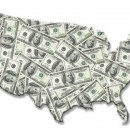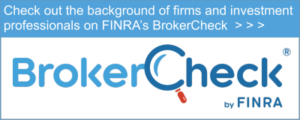 The New Year is a time to take a step back, reflect on the past year and consider what can be done to improve the future. In addition to typical resolutions, the New Year brings with it the opportunity to do something to improve your financial well-being. The money moves listed below outline strategies that may help you get started on the right path in 2012.
The New Year is a time to take a step back, reflect on the past year and consider what can be done to improve the future. In addition to typical resolutions, the New Year brings with it the opportunity to do something to improve your financial well-being. The money moves listed below outline strategies that may help you get started on the right path in 2012.
•Know your break-even point.
One of the most useful ways to approach your personal finances is to treat them as though they are not personal at all — manage your finances like a business. One important number that all business owners are aware of is their break-even point.
When a business’s expenses equal its income, that’s the break-even point.
Do you know your break-even? Unfortunately most people are completely unaware of exactly how much is coming in after taxes and how much is going out in the form of living expenses.
One of the most effective tools for shedding light on your break-even point is your budget. While many people become stricken with panic and anxiety when they hear the word budget, the exercise can be painless when approached properly. Interactive online budgeting tools found at websites like Kiplinger.com or Bankrate.com can provide a framework for listing income, expenses, and for determining your household profit or loss. Becoming aware of exactly how much you are spending can be an eye-opening experience, but it lays the foundation for reducing unnecessary expenses that can be applied toward other financial goals.
•Build an emergency fund.
Cash reserves are the cornerstone of any sound financial plan as they help protect you from the inevitable financial curve balls that life may throw at you. While many experts suggest three months’ worth of expenses in an accessible reserve, the continued economic uncertainty may mean that you need six to nine months’ worth in order to provide a stronger safety net.
Many savers feel it is unrealistic to expect to accumulate a savings of that size. It’s true that it could take some time to accomplish this task. However, keep in mind that consumers have no problem taking five years to pay off a loan for their latest auto purchase.
Approach your savings with the same discipline. Monthly cash reserve savings should be budgeted just like any other expense so that you can begin the New Year with a game plan to accumulate a solid financial parachute.
•Consider refinancing.
Mortgage rates are near all-time lows and present a tremendous opportunity to those who can take advantage of them. According to Freddie Mac’s primary mortgage market survey, the rate on 30-year and 15-year mortgages are approximately 3.9 and 3.2 percent respectively. Refinancing a $200,000, 30-year fixed-rate mortgage at 5.75 percent to current rates could save nearly $233 per month.
In addition to refinancing a primary mortgage, this may be an opportunity to consolidate other debts. Consider transferring variable rate debt like home equity lines of credit or other credit card debt to a single fixed loan at one of the best rates in history.
For homeowner’s who owe more than their home is currently worth but are current with their mortgage payments, the recently modified federal government’s Home Affordable Refinance Program, or HARP, could be an effective option for taking advantage of lower interest rates. However, in order to qualify, the mortgage must be owned or guaranteed by either Fannie Mae or Freddie Mac.
•Increase your retirement savings.
The recent collapse in the equity, housing, and job markets has pushed the target retirement date back for many investors. In fact, the Employee Benefit Research Institute has stated that approximately two-thirds of American workers reported total savings and investments of less than $50,000.
There are a few things to consider in order to improve your retirement plan. First, time is a saver’s greatest resource — the sooner you begin saving, the closer you may be to retiring. Next, consider gradually increasing your retirement contributions by a few percentage points throughout the year. Keep in mind that the IRS has increased the 401(k) limit for 2012 to $17,000, allowing additional savings.
Finally, take full advantage of employer-provided matching contributions. Simply put, a match is free money! If you are not saving up to the maximum matching level, you are leaving money on the table.
Implementing the tips above can help establish a solid financial game plan for the New Year. Consider taking action so that when 2012 eventually comes to an end, you can reflect on the year and feel confident about your financial well-being.
This is for general information only. Please consult your adviser about your specific situation.
Kurt J. Rossi, MBA, is a CERTIFIED FINANCIAL PLANNER™ Practitioner & Wealth Advisor. He can be reached for questions at 732-280-7550 and kurt.rossi@Independentwm.com. LPL Financial Member FINRA/SIPC.








